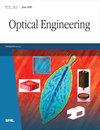宽波段激光熔覆的熔池建模和热场模拟
IF 1.2
4区 工程技术
Q4 OPTICS
引用次数: 0
摘要
摘要如果忽略马兰戈尼效应,直接能量沉积热分析模型的准确性就会大打折扣。各向异性增强热导率方法可提高瞬态有限元(FE)热模型的保真度,但增强因子的确定通常基于经验知识或反复试验。本研究在不同工艺参数下进行了单轨熔覆实验,用红外相机记录了熔覆过程,并从红外图像中提取了熔池宽度和长度。根据模拟和实验熔池尺寸的比较,确认了最佳匹配增强因子。研究结果表明,最佳匹配增强因子并不是一个恒定值,而是随着工艺参数的变化而变化。随着增强因子的增加,熔池峰值温度开始急剧下降,随后趋于稳定。熔池宽度几乎保持不变,而熔池长度则略有增加。研究发现,激光比能量是表征熔池对流特征和强度的合适指标。通过线性回归分析,得出了激光比能量和增强因子的经验模型,大大简化了增强因子的确定。实验结果表明,FE 热模型在预测熔池大小方面的误差小于 6.3%。本文章由计算机程序翻译,如有差异,请以英文原文为准。
Modeling of melt pool and thermal field simulation for wide-band laser cladding
Abstract. The accuracy of thermal analysis modeling for direct energy deposition is compromised if the Marangoni effect is ignored. The anisotropic enhanced thermal conductivity approach can improve the fidelity of the transient finite element (FE) thermal model, but the determination of the enhanced factors is generally based on empirical knowledge or trial and error. In this study, single track cladding experiments were conducted at different process parameters, the cladding process was recorded by an infrared camera, and the melt pool width and length were extracted from the infrared images. The best match enhanced factors were confirmed according to the comparison between the simulated and experimental melt pool sizes. The findings suggest that the best match enhanced factors are not a constant value, but rather vary with changes of process parameters. With the enhanced factors increasing, the peak melt pool temperature drops sharply at first and then tends to be stable. The melt pool width remains almost unchanged, whereas the melt pool length exhibits a slight increase. Laser specific energy was found to be a suitable metric to characterize the convection features and intensity of the melt pool. An empirical model of laser specific energy and enhanced factors was derived through linear regression analysis, which greatly simplified the determination of the enhanced factors. The experimental results showed that the error of the FE thermal model in predicting the melt pool size was less than 6.3%.
求助全文
通过发布文献求助,成功后即可免费获取论文全文。
去求助
来源期刊

Optical Engineering
工程技术-光学
CiteScore
2.70
自引率
7.70%
发文量
393
审稿时长
2.6 months
期刊介绍:
Optical Engineering publishes peer-reviewed papers reporting on research and development in optical science and engineering and the practical applications of known optical science, engineering, and technology.
 求助内容:
求助内容: 应助结果提醒方式:
应助结果提醒方式:


